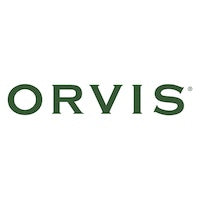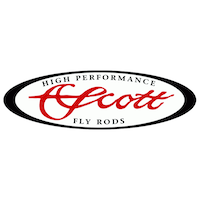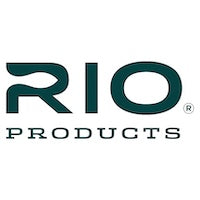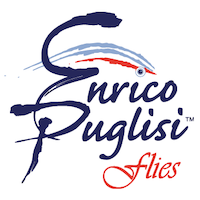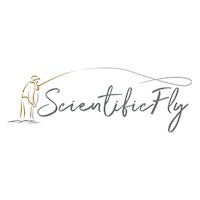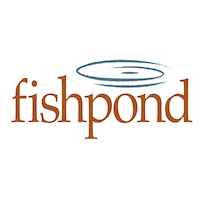Freshwater Fly Fishing in Central Florida
Catching fish on a fly in Florida is a relatively simple endeavor if your expectations are realistic. Almost every body of freshwater in the Orlando area is populated with largemouth bass and panfish. Most of the water is shallow and, if you can get access to a relatively clear shoreline, ideally suited to fly fishing. These fish are hungry and ready to eat a fly.
The fish you are most likely to encounter are largemouth bass and a variety of panfish, including bluegill, redbreasted sunfish, and redear sunfish. Panfish are also locally referred to as “bream.” These fish share similar habitat and are often caught on the same flies.
Where to Start?
 The best place to start is right outside your door. If you are anywhere in the Orlando area, there is a pond or lake that holds fish within a couple miles. Much of the water is private but there is public land all around, including many small waterside community and city parks. Many hotels have a pond or lake on premises. Especially if you’re staying at the hotel and the water is not posted, chances are good nobody will bother you if you spend some time walking the shoreline casting a fly rod. Don’t overlook tiny retention ponds, canals that look like drainage ditches, and vegetation choked creeks. All are likely to hold fish that have never seen a fly.
The best place to start is right outside your door. If you are anywhere in the Orlando area, there is a pond or lake that holds fish within a couple miles. Much of the water is private but there is public land all around, including many small waterside community and city parks. Many hotels have a pond or lake on premises. Especially if you’re staying at the hotel and the water is not posted, chances are good nobody will bother you if you spend some time walking the shoreline casting a fly rod. Don’t overlook tiny retention ponds, canals that look like drainage ditches, and vegetation choked creeks. All are likely to hold fish that have never seen a fly.
Any rod in the 4wt to 8wt range, paired with a weight forward floating fly line, will work. An ideal freshwater setup, if you want as much action as possible, is a 5 weight rod with a weight forward floating line and a small popper (#10 to #6) tied on the end of a 9 or 10' 8lb to 12lb pound tapered leader. This will catch you panfish and decent numbers of small and medium sized bass as well. Small baitfish patterns, damsel and dragonfly nymphs and wooly buggers also work well. Because there is a lot of vegetation in most local bodies of water, consider using flies that ride high in the water column, and bring at least a few with weed guards.
Fly and Leader Recommendations for Panfish and Small Bass:- Rio Bass Leader – 8lb, 10lb, 12lb
- Rio Tippet Material - in size matching leader
- Boogle Popper - #8, in olive, black and yellow
- Rainy’s Spidey Sense - #12, in yellow or tan
- Spiller’s Bumble Butt
- Bea Bea Bug - #10, in chartreuse, yellow and black
- EP Micro Minnow
- Damsel Nymph
Florida Strain Largemouth Bass
 Oversized Florida strain largemouth bass draw anglers to Florida from all over the world. Few of the bass are the 12 pound monsters you see pictures of (though fish that big are occasionally caught on fly), but decent sized fish are common. Most of the bass you will catch on fly will be between half a pound and three pounds. A 4 lb or 5 lb bass would be considered “big.”
Oversized Florida strain largemouth bass draw anglers to Florida from all over the world. Few of the bass are the 12 pound monsters you see pictures of (though fish that big are occasionally caught on fly), but decent sized fish are common. Most of the bass you will catch on fly will be between half a pound and three pounds. A 4 lb or 5 lb bass would be considered “big.”
You won’t catch as many fish but, if you would like to focus on catching large bass, a 7 or 8 weight rod is ideal. The heavier rod will allow you to throw large, wind resistant flies and to pull fish out of heavy cover. A floating bass or even a saltwater line is the most common choice. If you are fishing from a boat, a sink tip line, in some of the clearer water, works well too. Use a leader of at least 12 lb, with 16 lb being a better option in areas with lots of vegetation.
Fishing a larger fly will keep the small fish from eating and is more likely to be noticed by a big largemouth. Because of the abundant vegetation in most of our lakes and ponds, topwater and midwater flies are usually a better choice than flies that sink quickly. Good choices for larger fish are poppers, either deer hair or hard, Dahlberg divers, larger baitfish that look like panfish or shiners, worm flies and any of the traditional bass flies, as long as they don’t dive too quickly. If you are a visitor who fishes for bass at home, bring your fly box. The flies you use there will probably also work here.
Fly and Leader Recommendations for Large Bass:- Rio Bass Leader – 12lb, 16lb
- Rio Tippet Material - in size matching leader
- Boogle Popper - #4, in olive, black and white
- Double Barrel Popper - #2, black/purple and green/chartreuse
- Bass Popper - #6, froggy bottom
- Froggy Popper - #6
- Black Bee Popper - #2
- Dahlberg Diving Bug
- Ultimate Worm
- HUD’s Bushwhacker - bluegill and chartreuse
- Jiggy Worm
- EP Bluegill - #1/0
- EP Oscar - #2/0
- EP Pinfish - #2/0
- EP Peanut Butter - black/purple, #2/0
- EP Finger Mullet - #1/0, #2/0
- Seaducer - #2, red/white and black
What to Look for on the Water:
 When you first get out on the water take a few minutes to look around. What does the water look like? Is it clear? Are there any lily pads in the water or other vegetation? Does the bottom drop off at the edge or taper down slowly? Do you see any baitfish on the edge? Are there any rises? Do they look like bass chasing baitfish or panfish slurping an insect off the top?
When you first get out on the water take a few minutes to look around. What does the water look like? Is it clear? Are there any lily pads in the water or other vegetation? Does the bottom drop off at the edge or taper down slowly? Do you see any baitfish on the edge? Are there any rises? Do they look like bass chasing baitfish or panfish slurping an insect off the top?
Choose your fly and presentation based on what you see. If bass are chasing baitfish around the edge or on the surface, put on a baitfish pattern. Smaller flies, like the EP Micro Minnow, often work better than large flies in this case. If you’re seeing panfish come up for insects, then tie on a little popper. If there’s no surface action and the water is deep, with little vegetation, then a sinking baitfish fly, like the Clouser Minnow, would be a good place to start. If the water is shallow, try a small popper or a dragonfly nymph stripped slowly beside or over a weed bed.
Bass and panfish are structure oriented fish. Learning what structure they prefer and where they might be lying in ambush will help you to catch more and bigger fish. Docks, weed beds, lily pads overhanging trees and any type of underwater structure are all worth investigating. Fish are often hesitant to move away from this structure. A cast that lands 4 inches from a stump by the shoreline may elicit a vicious strike while the same cast 12 inches away may be totally ignored.
What About the Weather?
Bass and panfish thrive in the warm Florida environment, with a year-round growing season. If you know what you are doing and have the right gear, they can be caught in good numbers throughout the year.
Bass and panfish are very active during warmer parts of the year, when the water is alive with mosquitofish (gambusia) and other minnows, ghost shrimp, frogs, and a variety of aquatic nymphs. Fishing is usually best during low light conditions in the morning and evening, as well as on overcast days. During hot, sunny summer days, the action usually slows down in the middle of the day. You can still catch plenty of fish if you focus on heavy cover or fish a little deeper. An afternoon thunderstorm will cool things down quickly, bringing fish back to the shallows.
As the weather cools in late fall, the fishing action does slow down. This doesn’t mean you won’t catch fish, but that you may have to work a little harder and fish more methodically. On warm days, the fishing will be reminiscent of summer, with bass and panfish eating off the top. In colder condition, however, you’ll do better with a sinking baitfish or nymph pattern fished slowly. If you have the option, avoid fishing right after a cold front comes through as the fishing will probably be very slow. Three or four days later the temperature, and the fishing, will most likely heat up again.
Places to Go:
This is a short list of specific places to consider for a freshwater fishing trip. With the exception of the Ritz, as of this writing all offer canoe and/or kayak rentals.
- Turkey Lake/Bill Frederick Park. In Orlando near the Convention Center and the Attractions. Offers Bass Tracker rentals several days a week.
- Secret Lake Park Recreation Center. In Casselberry, about 30 minutes north of Orlando. Offers canoe and kayak rentals.
- The Paddling Center at Shingle Creek. In Kissimmee near the attractions. Offers canoe and kayak rentals on Shingle Creek, the headwaters of the Everglades.
- Wekiva Island. About 45 minutes north of Orlando on the Wekiva River drainage. Offers canoe and kayak rentals.
- Ritz Carlton/JW Marriott Orlando, Grande Lakes. Offers hourly fishing on golf ponds and Shingle Creek at a reasonable rate. Close to the Convention Center and the Attractions.
- Adventures in Florida - Provides day trips in the Orlando area. The location will vary. Depending on the owner's schedule, canoe rentals are available out of Geneva, FL, near the St. Johns River, about an hour northeast of Orlando.

